Jon Racherbaumer products: page 1
| Listed | Price | |
Debits, Credits, and other LeftoversJon Racherbaumer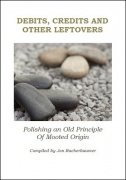 Polishing and old principle of mooted origin ... Jon Racherbaumer explores an old but fascinating self-working trick which can be performed with any set of counters, be they cards, sticks, stones, coins, matches, business cards, bottle caps, gummi bears, ...
| ★★★★★ $10 to wish list | ||
Daley BredJon Racherbaumer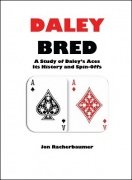 A study of Daley's Aces its history and spin-offs. This treatise is a compilation of methods for performing a simple transposition of pairs of cards - namely the red and black Aces. The basic plot has a checkered history and, despite being associated with Dr. Jacob Daley, there are lots of tangled connective tissue and ancestral than meets the eye. Besides these aspects, you will discover that this treatise is a rich mixture of memes. That is, there are lots of bits and pieces to play with and, if you are the kind of student that likes to study the history of a trick and then work through... | ★★★★★ $12 to wish list | ||
Cutting Deeper: an exploration of coercive cuttingJon Racherbaumer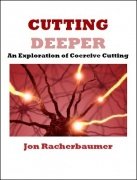 This manuscript is ancestrally related to Criss-Crossings: Unleashing the X-Force insofar as it also deals with cutting cards. In this case, it deals with "cuts" and "turnovers." This type of combinatorial maneuver began with Henry Christ's forcing technique that he developed in the early 1920s. He originally developed six variations but he only published the fifth one in Ted Annemann's book, Sh-h-h It's a Secret, calling it "The 203rd Force." It subsequently has been referred to as the Christ Force and it spawned many versions and applications. Because of the cut-?turnover-?and-?replacement mechanics, the Christ Force is often confused with Ed Balducci's... | ★★★★★ $8 to wish list | ||
Cunning AttractionsJon Racherbaumer A different take on the usage of the mini-plunger or tiny plunger. When Danny Orleans showed the item to Jon it sparked his creativity. Read about the outcome here.
1st edition 2013, 41 pages. | ★★★★★ $12 to wish list | ||
Cull-MinationJon Racherbaumer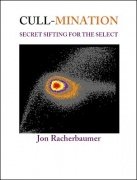 Culling (cards) is not a particularly fashionable technique. During the past forty years, card magicians started to pay closer attention to various ideas and techniques, especially those having broad application. In this treatise three types of culls will be examined:
| ★★★★★ $15 to wish list | ||
Criss-Crossings: Unleashing the X-ForceJon Racherbaumer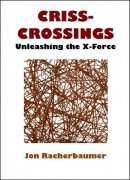 This is an interesting study of the X-Force and variations thereof only the way Jon Racherbaumer can do it. The X-Force is the simplest force that every magician has learned to do at one point in their life. Jon dissects the X-Force or Criss-Cross Force and then puts it back together in different and new ways. This is fodder for those that want to go into the fine and nuanced details of performing this force.
| ★★★★★ $8 to wish list | ||
Compleat K.M. MoveJon Racherbaumer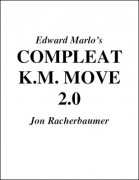 This is the fourth revised treatment that Marlo and Jon worked on during the last year of his life. Their objective back then was to publish a new old-book by expanding the original work to include ideas, finesses, and variations devised after 1962. More important, the revision was to be more organized and cohesive than the original. The original K.M. MOVE booklet was typed on twenty-three pages. There were only eleven hand-traced, inked drawings [by Marlo]. The material faithfully duplicates Marlo's hand-written notes and was typed by Muriel Marlo. All in all, the finished product had an unpretentious,... | ★★★★★ $10 to wish list | ||
ClockworkJon Racherbaumer On the Clock Effect The clock effect/principle is a variant of the automatic placement principle. It allows you to force a card. The procedure typically is that the spectator freely selects any full hour on the clock (1-12). Cards are then dealt into a clock pattern where one card takes the place of each hour. The card at the spectator's freely chosen hour is the force card, which for example could have been predicted beforehand. The Clock Effect using playing cards originated at the turn of the century. Potter's Index subsequently listed thirty-eight (38) references—one of the earliest... | ★★★★★ $10 to wish list | ||
Centric DoublesJon Racherbaumer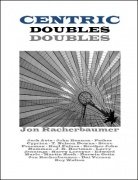 This is a detailed and thoroughly researched work on double lifts taken from the center of the deck, or so called center double lifts. A double lift is one of the hardest moves to do well and at the same time one of the most practical and useful moves in magic. One strategy to make a double lift more deceptive is to take two cards from the center rather than from the top of the deck. The downside of this strategy is that the utility of the move is reduced. Nevertheless, for the expert card handler it is worthwhile to study these types of double lifts and acquire one or two versions for one's... | $15 to wish list | ||
Burn: Surviving Riffle ForcesEdward Marlo & Jon Racherbaumer & Steve Reynolds The five techniques explained in this treatise are directly or tangentially inspired by Ed Marlo’s An Updated Force (1987). Techniques taught are:
1st edition 2009; 20 pages photo illustrated | ★★★★★ $10 to wish list | ||
BlufferyJon Racherbaumer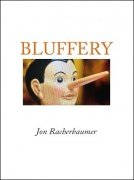 Jon explores the bluff pass and its spin-offs.
| ★★★★★ $15 to wish list | ||
Black JackeryJon Racherbaumer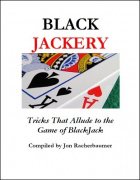 Tricks that allude to the game of BlackJack.
1st edition 2023, PDF 30 pages. | $12 to wish list | ||
Big Easy Card CunningJon Racherbaumer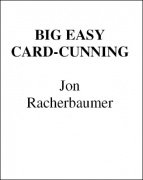 These are all self-working or very easy to perform effects. One item that I would like to highlight is the Klutz Force, because it is on the same skill level as the popular Criss-Cross force, which is frequently used in self-working effects. With the Klutz Force you have an alternative that has a different feel and procedure.
| ★★★★★ $15 to wish list | ||
Back To The Future ClassicEdward Marlo & Jon Racherbaumer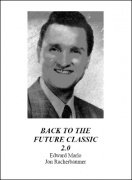 Edward Marlo and Jon Racherbaumer study three similar effects:
2nd edition 2002, 50 pages. Table of Contents
| ★★★★★ $10 to wish list | ||
AvatarRobert Walker & Jon RacherbaumerRobert Walker was a unicycling, high-school student. Looking five years younger than he was, he was a dyed-in-the-wool card guy tutored in Marlovian ways. He was also a precocious writer-creator, obsessed with false counts and packet tricks. He spent many hours "twisting the night away," taking voluminous notes, and developing new methods and approaches. His first mini-treatise dissected a marketed packet trick by Larry West ("Wild, Wild West") which he passed onto Jon Racherbaumer to publish. It became the second installment of the loose-leaf Avatar, printed on pink paper and unadorned by illustrations... | $6 to wish list | ||
At the TableJon Racherbaumer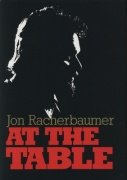 Beautiful close up magic by Jon Racherbaumer, John Cornelius, Roger Klause, Ed Marlo, Jim Hunter, Steve Draun, Eddie Adams, Lee Fried, Chuck Smith, Phil Goldstein, Tom Mullica, and Simon Aronson. Here is magic that is unique and that you will not see in other books. The ebook is divided into chapters on Coins, Cards, Linking Pins, Mental Magic, and Diversions. You will find such unusual items as Marlo's complete presentation of the Color Vision box, Racherbaumer's close up Miser's Dream, Marlo work on Linking Pins, Cornelius' Coins thru Table, Mullica's version of Jarrow's Cig thru Hanky, and more. The section on card magic (mostly Marlo... | ★★★★★ $18 to wish list | ||
Arch TriumphsJon Racherbaumer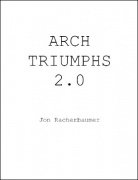 Every card magician will know the Triumph effect: The performer is recklessly and haphazardly mixing cards face up and face down. Then, without warning or manipulation, this entire disorder is instantly corrected. All of the cards face the same way except for a selection. The most famous routine is Dai Vernon's "Triumph" originally published in Stars of Magic. However, he probably was influenced by other similar effects that came before. One such routine is Sid Lorraine's "Slop Shuffle". Jon Racherbaumer will take you through the history of this wonderfully visual effect and will explain and discuss the many... | ★★★★★ $15 to wish list | ||
Antics and Interludes: Contextual Card CozenageJon Racherbaumer Classic Racherbaumer. I had to use the dictionary twice just to make it past the title :-) If you don't learn any card magic you will certainly expand your vocabulary. But I am sure you will learn a good amount of very thoughtful pieces. From the introduction: Can we then agree that Card Antics consist of novel actions, cute bits, and amusing maneuvers? This is what happens when cards jump, rise, change, multiply, disappear, reappear, penetrate, spin, and so forth. Aren't Card Antics meant to provoke delight and bewilder? To explore ways to convert, tweak, and redeem "pasteboard antics"... | ★★★★★ $15 to wish list | ||
Analects and AnaloguesJon Racherbaumer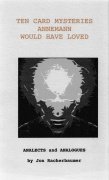 Ten card mysteries Annemann would have loved. This book was part of a two-person three-hour lecture session given by Harry Anderson that Jon gave at a Daytona Magic Conference. Excerpt from the foreword: Anneman believed that the effect is the most important thing and, to paraphrase Vince Lombardi, the effect is the only thing. Anneman believed, as deists believe in a god, that a magician must do something extraordinary with the ordinary…and what is demonstrated must also have no practical use or relevance in the real world. It is a demo, not an application of real power. Anneman... | ★★★★★ $19.50 to wish list | ||
All That JazzJon Racherbaumer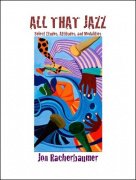 Jazz Aces was inauspiciously introduced to the magic world in 1971 when Peter Kane published Another Card Session. It was a fortuitous event because it appeared about the same time the Elmsley Count was gaining favor with magicians from coast to coast. Like weeds in an open field, packet tricks were also popping up everywhere. Furthermore, Kane's routine clarified the transposition aspects of basic Ace Assemblies. Using only 8 principal "players" (cards), his action procedure was simple and direct. Best of all, the final transposition was squeaky clean. As a result it did not take long for Jazz... | ★★★★★ $15 to wish list | ||
All Backs: a select compendiumJon Racherbaumer The All Backs Motif is odd. For one thing, it casts a revealing light on we magician's claim (when it suits our purpose) that we use ordinary cards. That is our decks, which we prefer to borrow, consist of cards that have faces and backs on both sides. Therefore, if we show a deck that consists of all backs and faces we are admitting that such anomalies exist and the cards being used are probably gimmicked in some way. Why do this? A better question may be - What motivated someone to create such an effect using this kind of deck? That "someone" was Dai Vernon and my guess is that he wanted to... | $15 to wish list | ||
A Promising PremiseJon Racherbaumer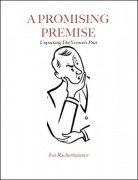 Unpacking Dai Vernon's Pact When Vernon's trick appeared, its puzzling aspect centers on the fact that the spectator chooses one of three cards and the one chosen changes into his selection. In other words, the spectator is permitted to make two decisions. He selects any card. Then he selects one-of-three cards, which changes into his selection. It is essentially a quickie.
| ★★★★★ $12 to wish list | ||
A Hobsonian HandbookJon Racherbaumer Explorations, examples, and routines using equivoque. Hobson's Choice: the choice of taking either what is offered or nothing else; the absence of choice. [after Thomas Hobson (1544-1631) of Cambridge, England, who rented horses and gave only one choice, that of the horse nearest the stable door]Equivoque or Magician's Choice in its myriad of forms is considered a First Principle by students of mentalism. What fascinates me is the elusiveness of this subject because no one has yet written a definitive, synoptic, and detailed magnum opus on the subject. There have been good piecemeal accounts written here and there about and most magicians understand how it basically works in specific cases; however, trying to ferret out its... | ★★★★★ $12 to wish list | ||
13 Ways to Three-WayJon Racherbaumer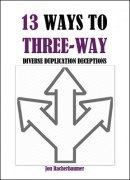 This ebook explores the classic "Quick Three Way" plot. How can the faces of three playing cards be shown to be the same?
1st edition 2017, 42 pages.... | ★★★★★ $10 to wish list |